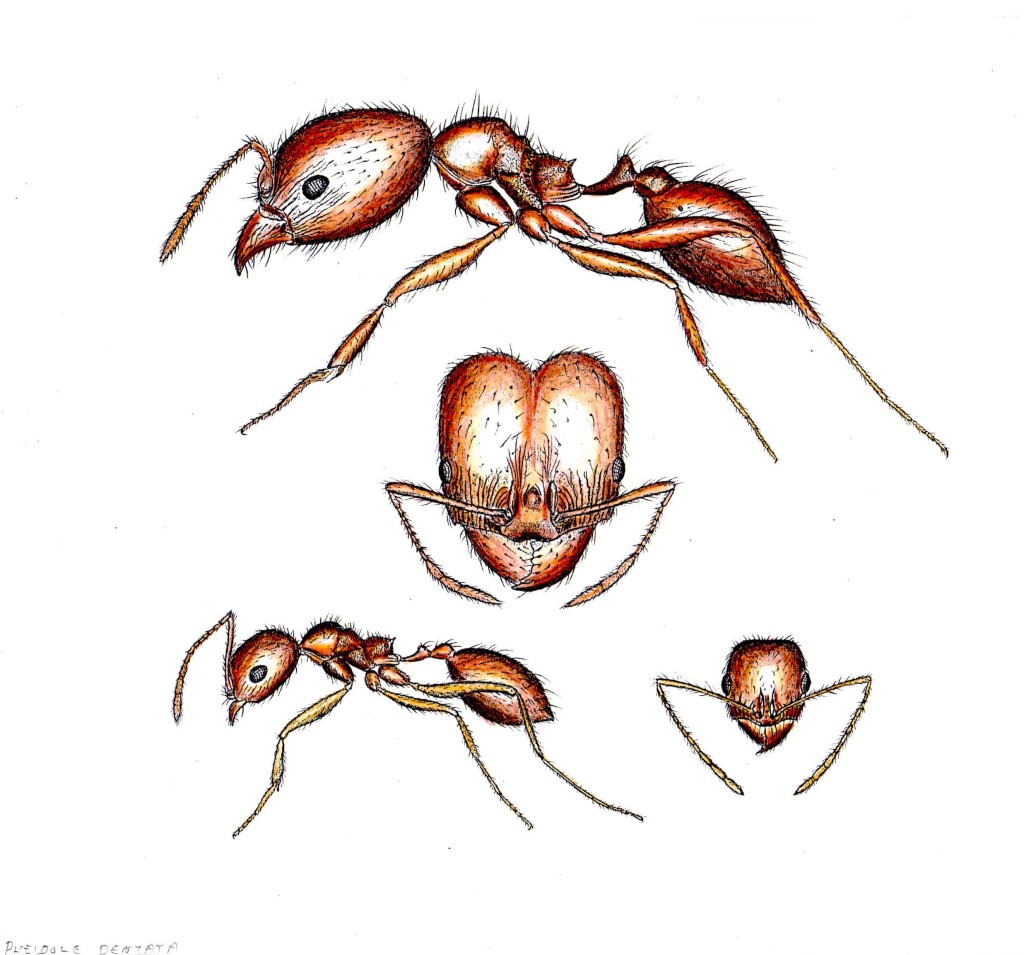
Author: Mark Deyrup
Big-Headed Ants probably live in almost every backyard in Florida; however, their strange appearance and interesting behavior are seldom noticed. This is because they are small (usually no more than 1/8 inch long) and spend most of their time below ground. Unlike some small ants, they don’t get our attention by biting or stinging.
Most people are happy to ignore these ants, but at Archbold Biological Station there are few kinds of animals, even small innocuous ones, that are beneath the attention of curious researchers. The ten species of Big-Headed Ants living on the Station have been studied by both resident and visiting biologists. According to Archbold entomologist Dr. Mark Deyrup, “Biologists can easily find the ants because the ants (and often the biologists) are strongly attracted to rich cookies, such as pecan sandies, which provide the tempting trifecta of sugar, fat, and protein.” Deyrup continued, “One of the discoveries resulting from baiting with cookie crumbs is that Big-Headed Ants are amazingly common in all natural terrestrial habitats, but different species are usually confined to particular habitats such as open sandy areas or dense scrub oak thickets.”
Big-Headed Ants belong to the ant genus Pheidole (pronounced Fie doh’ ly), a huge group of more than 900 species, most of them tropical. The name Pheidole means ‘thrifty’ in Greek, referring to the many species in the genus that harvest and store seeds. The entomologist who first named Pheidole ants in 1835 was impressed by a colony whose members were hauling damp seeds out of an anthill after a rain, laying the seeds in the sun to dry, then carrying them back down, showing “a perseverance offering a useful lesson to humanity.”
The diligence of Pheidole ants can be easily observed by setting out tiny piles of cookie crumbs on a warm day in almost any upland habitat in Florida. The speedy discovery of the crumbs by wandering scout ants is quickly followed by trails of ants recruited to retrieve the treats. This suggests that every inch of most Florida habitats is patrolled by ants.
An unusual feature of Big-Headed Ants is that their workers come in two sizes, one much bigger than the other and with a disproportionately massive head. These larger workers have specialized tasks such as seed milling or colony defense, while smaller workers tend to larvae in their nest and scout for food in the surrounding area. When he was making drawings for an identification guide to Florida ants, Dr. Deyrup had to draw both the big workers and the small ones of each species because they look so different.
The common little Big-Headed Ants working in their efficient teams at the l Station and throughout Florida must have an outsized effect reducing numbers of small insects and seeds that are gathered and consumed. These ants are just part of a menagerie of little creatures that manage the world beneath our feet. Just as a huge diversity of bacteria helps balance our digestive systems a huge diversity of tiny insects helps balance the natural world upon which we live.


So interesting. Thanks Mark
LikeLike